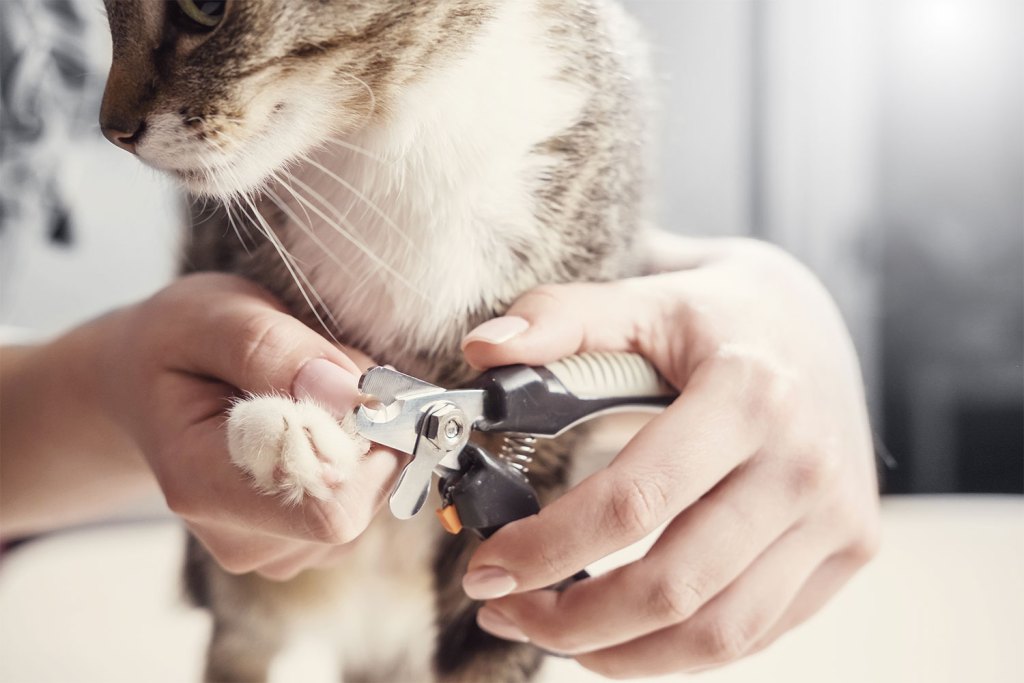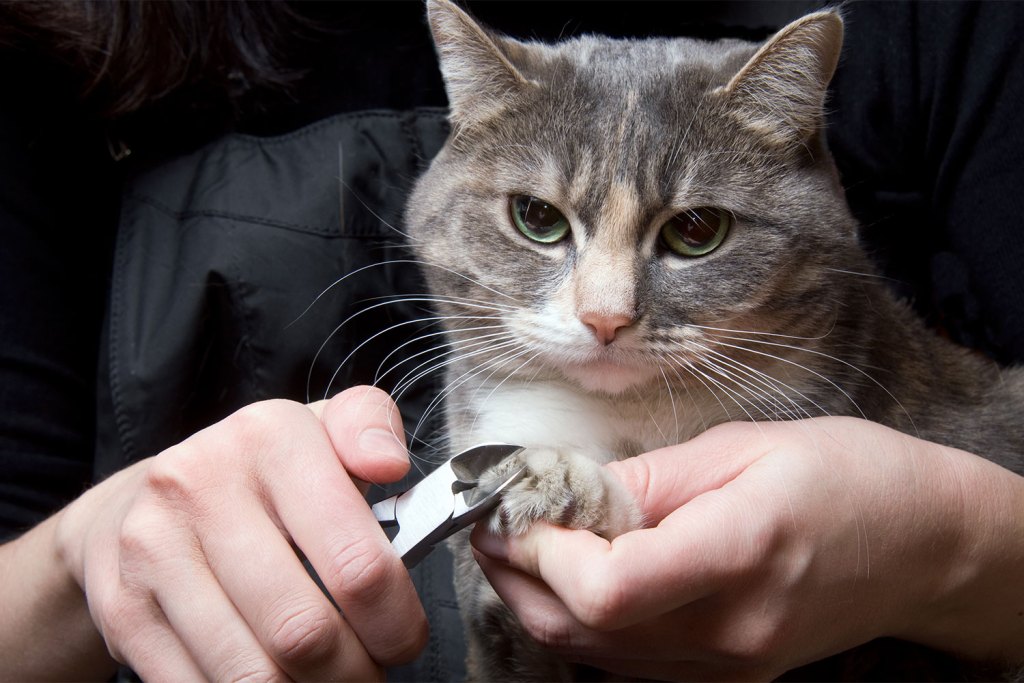When learning proper cat petting techniques, the purpose is not to get mauled. Because when you do get mauled, you can be at the mercy of their sharp nails. So your favorite part of being a cat owner probably isn’t cutting their nails. This task can be daunting or even painful at times. You can choose to have your veterinarian cut your cat’s nails, but this takes extra time and money — it is best to learn to do it yourself. We know you want to enjoy all of your time around your pet, so here are some tips to help make the process of cutting nails a breeze.

Get your cat acquainted
It is ideal for a cat to be introduced to nail clipping at a young age. This way they will quickly get used to it and the act will be easier on all parties involved. You should do the introduction while your cat is calm, perhaps when they are sleepy or right after they eat. Before using the nail clippers, make sure your cat gets acquainted with the sound of the clippers. The sound can be loud and potentially frighten cats. To train your cat to get used to nail clipping, you’ll need the help of a dry piece of spaghetti. Insert the pasta into the nail clippers, and gently press one of your cat’s toes. This should cause them to extend a nail; when your cat’s nail is out, clip the spaghetti. Repeat a few times, preferably with different toes and on multiple paws. Treats will probably be useful in having a successful training session.
If your cat is reluctant to have their paws handled, practice massaging and grabbing toes prior to cutting spaghetti. When they go to pull their paw away, don’t resist — instead, continue holding on and gently move with them. Gently push on one toe pad, which should cause a nail to be extended, then immediately release your grip and give your cat a treat.
How to cut a cat’s nails
By observing your cat’s nail, you will notice the end closest to the paw is pink. This is called the quick of the nail, and it contains blood vessels and nerves. You should never cut so far as to nick the quick. Only clip off the white part of the nail — and if you’re unsure, it’s better to be safe than sorry. When in doubt, leave a decent amount of white nail to protect the quick.
Another preparation before cutting nails is having the right tools on hand. Human nail clippers are not strong enough, baby nail scissors can cause pain when used on a cat’s nails, and dog clippers are too big. You should get a pair of nail clippers designed specifically for cats. They should have sharp, stainless-steel blades. For your comfort, consider a pair of nail clippers with cushioned or ergonomic designs.

When you’re ready to begin clipping, place the cat on your lap with their head facing away from you. Take one of their toes in your hand and gently press it, revealing the nail. Decide how far you should cut (remembering to leave a border around the quick), do the deed, cutting at a slight downward angle, and then release your cat’s paw. Now it’s time to give them a treat. Cats who are just getting used to nail clipping should not have more than a few nails cut at one time. Cats have at least 18 toes, so you might start by doing one paw per sitting.
How often do I need to cut my cat’s nails?
A cat’s nails continuously grow. If not trimmed, they will grow downward and sometimes into a cat’s paw. It will eventually become painful for a cat to walk if their nails are not regularly cut. The time between routine nail clippings will depend on how fast your individual cat’s nails grow, but on average it should be every 10 to 14 days.
Keeping your cat’s nails short is an important part of feline hygiene that requires your help to complete. Although they might be reluctant to cooperate at first, with the proper training techniques, your cat will be thankful that you’re around to trim their nails for them.


